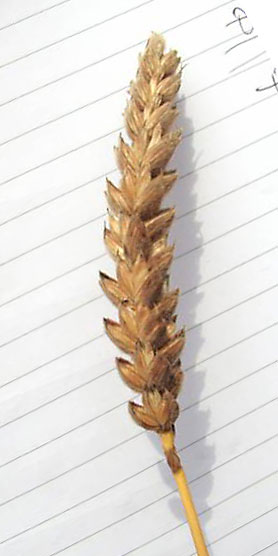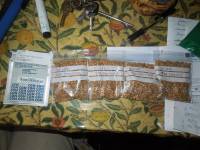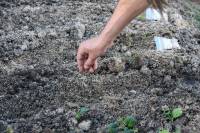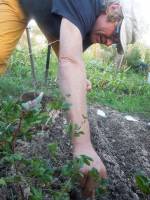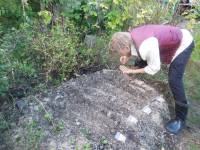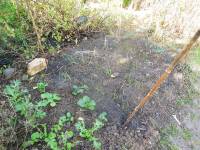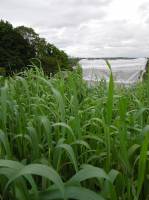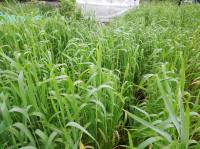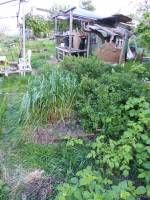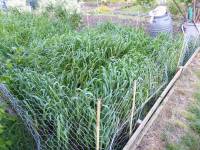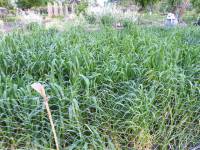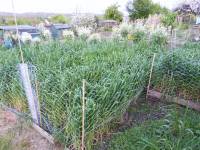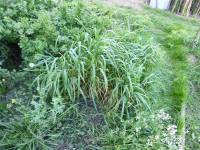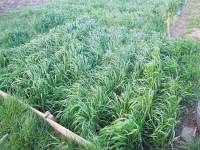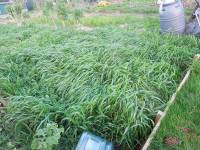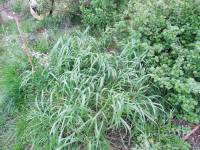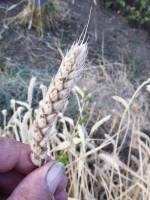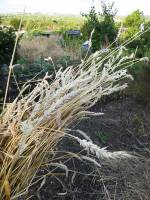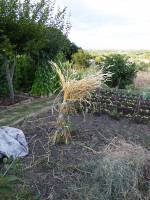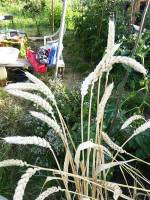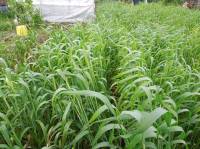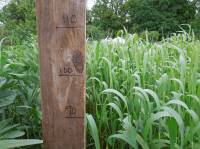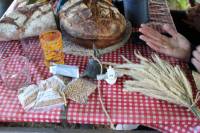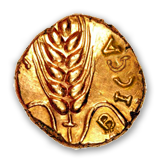 BICGA wheat portal
BICGA wheat portal
Red Stettinorigin:Ireland first record:1847 references >>> ID images >>> |
Irish landrace wheat from Country Tipperary most probably originating from 19th C import of Pomeranian wheat through the Hanseatic League port of Stettin (present Szczecin) a particular instance of which was in 1847 as famine relief paid for by the Ottoman Sultan.
From the surviving lines "Red Stettin" (CGN) and "Red Stettin 13" are clearly the same and match the description given by Percival in "Wheat in Great Britain" 1934 as being "Ears beardless; chaff hairy, red; grain red" and the only one amongst the extant accessions that would appear to fit the synonym of "Irish Red Velvet Chaff" that Percival gives. This is also clearly one of the 13 lines selected from County Tipperary landrace as part of an Irish Free State project between 1920 and 1931 to improve the Irish wheat crop, especially in relation to milling/baking quality, hence the "13" denomination.
The GRU-JIC Red Stettin A, B and C are less clear in origin, A and especially B seem to include some diversity of morphology, C less so but all are possibly initial collections or selections from the Tipperary landrace for the Irish wheat improvement project. Only B of these however appears to contain any of the "Red Stettin 13" that might be expected if these were field collections of the original landrace.
SNP gene marker analysis shown in this dendogram at GRU-JIC does however appear to show a close genetic relation across all their Red Stettin accessions, particularly between Red Stettin 13, B and C.
Reference #1
Journal Vol. 21 by Department of Agriculture and Technical Instruction, Ireland, 1921 page 38"Red Stettin (or as the millers term it "Red Velvet") is a well known native wheat which has been cultivated in this country for many decades. For some time past the acreage under this variety had declined considerably and at present it is grown only in Co. Tipperary and along the valley of the Suir. Being a native sort it is eminently suited to the conditions existing in this country. It is a winter variety, hardy, resistant to disease, and it comes up very strongly and tillers well during the wet winters generally experienced in Ireland. It produces grain of a rich red colour and of very high milling and baking qualities. Many of the mills of Tipperary were at one time noted for their excellence of their flour and this doubtless was due to the fact that they were largely milling Red Stettin. Like all other unselected sorts this wheat is made up of a number of different types or sub-varieties most of which are easily distinguishable from one another, have weak straw and are not very productive. In 1919 a large number of plants which appeared to be of distinct types were selected and 13 of the most promising were retained for further cultivation."
Reference #2
An Irish Tale of Hunger and the Sultan by Tom Verde, 2015 LINKnotes: Detailed historical research into the story of Turkish aid during the Irish Potato Famine
"Combing period newspapers, Matthews learned that three ships from the Balkan regions docked at Drogheda in May 1847, within a month of Abdülmedjid's publicized gift. Two of the ships, the Porcupine and the Ann, carried Indian corn from Thessalonica (Salonica), while the third, the Alita, brought red wheat, also known as "Turkey red wheat" from Stettin, a Baltic seaport in what is now Poland. While Matthews does not go so far as to suggest these were the three so-called "secret ships" he does speculate that the coincidental convergence of grain-bearing ships from the Ottoman Empire, the star-and-crescent flag of the Drogheda Steam Packet Company and the desperation of the people thronging the docks may well have provided the legend with its seeds."
Other references
Dáil Debates by Irish Free State, 1929 LINK
notes: Concerning the project to improve quality of Irish wheat for inclusion in miller's grist
"From the old Red Stettin wheat which belongs to the County Tipperary, a selection had been obtained which was a good cropper and of excellent quality. Having been under test for several years, it has always produced a beautiful quality of grain, and it was evidently as capable of producing a loaf of as good volume, colour, flavour and crust as ordinary strong bakers' flour. In appearance and quality the grain resembled Manitoba No. 2. It also possessed good winter hardness and a good yield on suitable land, but the straw was not very strong, and it would not, therefore, be a suitable variety for cultivation on rich soils. Some millers have stated that this wheat is worth five shillings or six shillings per barrel more than the ordinary wheat grown in Ireland."
Journal Vol. 28 by Department of Agriculture and Technical Instruction, Ireland, 1929 LINK
notes: various references to Red Stettin in this edition of the Department's Journal
"A large propagation plot of Red Stettin wheat comprising about three Irish acres was grown on the farm of Mr. P. O'Connor, Knocklofty, Clonmel. Co. Tipperary. From this area 46 barrels, 4 stones or 115 hundred weights and 4 stones of dressed grain were obtained. The grain was of exceptionally fine quality, equivalent, in the opinion of several millers, to Manitoba Wheat No. 2.
A small scale baking test on samples of flour from this wheat showed that it was sufficiently strong for the making of loaves of high volume, and, moreover, in other respects, notably as regards flavour, it compared favorably with loaves made from an ordinary commercial mixture ...
... Red Stettin 13 appears to be a typically strong wheat and is suited for loaf bread manufacture. It would appear however, not to be well suited for soda bread making for which a weaker wheat i.e. one with a low percentage of gluten would he more satisfactory."
Leaflet Number 61; Wheat Growing by Department of Agriculture and Technical Instruction, Ireland, 1933
"Red Stettin This is selection from an old native wheat which was formerly grown fairly widely in South Tipperary and variously described in that district as Red Stettin, "Red Satin" or "Red Velvet". It is a red-grained wheat which produces a fine weak straw. The chaff is of a red or brownish colour and covered closely with short fine hairs. The grain is dark red and thin skinned and good samples present a somewhat flinty appearance. This variety has in trials conducted by Agricultural Instructors during the past few seasons proved to be a light yielder and as the straw lodges easily it is not recommended for general cultivation."
Parliamentary debates, Volume CXI by Hansard, 1850 LINK
notes: comparing quality of other wheats with the premium quality of Red Stettin
Technical Bulletin, Nos 176 - 200 by USDA-ARS, 1931 LINK
notes: Review of Irish Free State wheats, 1930s
"The Department of Agriculture of the Irish Free State is giving considerable attention to the propagation of improved varieties of wheat for cultivation. Two of these, Red Stettin 13 and Cooney Island are said to produce flour of excellent baking strength. Neither, however, were grown in a commercial way in 1927."
Wheat in Great Britain by John Percival, 1934 page 120
notes: Reference to "Red Stettin", synonym "Irish Red Velvet Chaff" within morphology category "Ears beardless; chaff hairy, red; grain red"
"An early wheat of high quality, somewhat resembling Fox, but with slightly longer and laxer ears, apical awns longer and grain smaller and narrower. Cultivated for more than 100 hundred years in central Ireland, and doubtless originally imported form the Baltic port of Stettin, from which considerable amounts of wheat were exported to this country 120-150 years ago."
Red Stettin 13 link
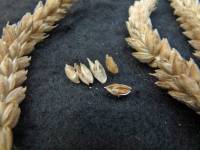
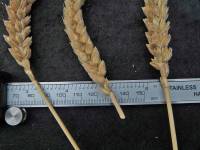
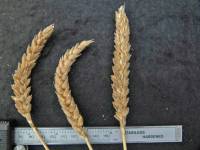
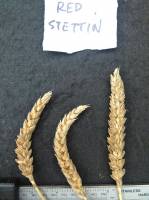
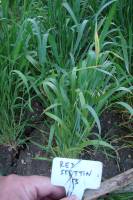
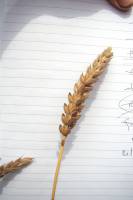
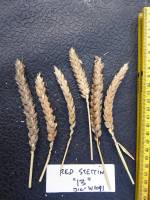
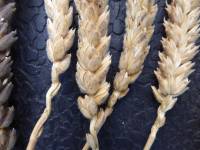
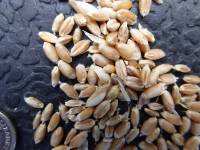
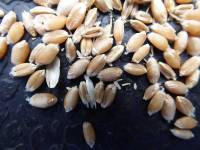
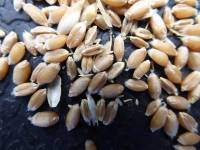
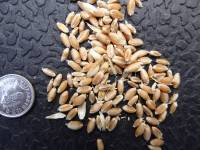
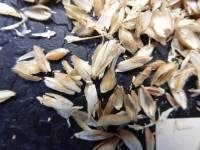
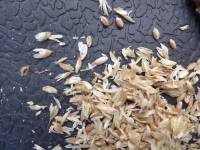
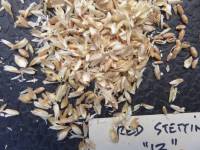
Red Stettin C link
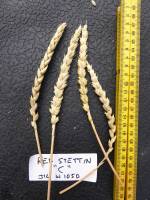
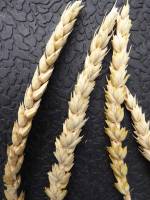
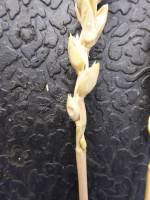
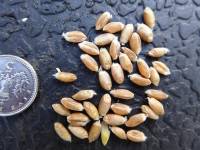
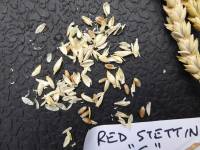
Red Stettin B link
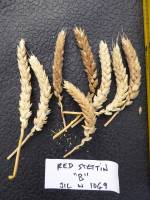
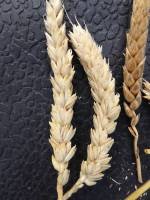
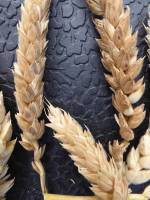
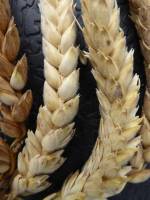
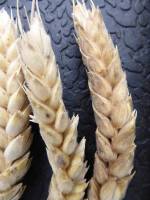
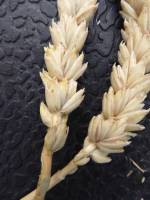
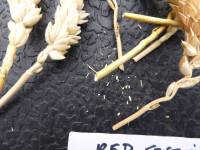
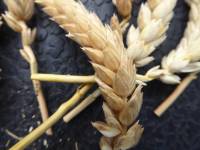
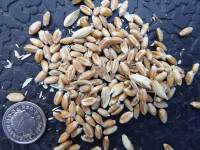
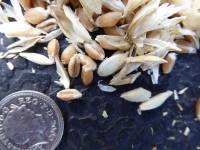
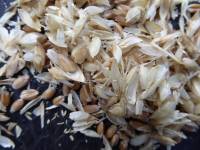
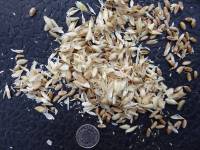
Red Stettin A link
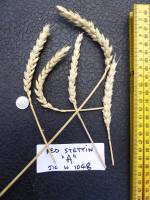
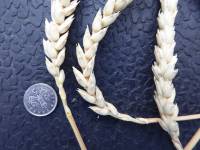
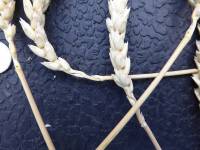
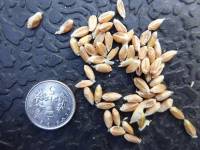
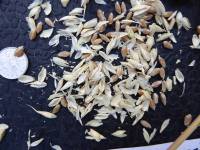
Germplasm link
Red Stettin CGN (NLD) #CGN04428
Red Stettin 13 GRU-JIC (GBR) #W1091
Red Stettin A GRU-JIC (GBR) #W1048
Red Stettin B GRU-JIC (GBR) #W1049
Red Stettin C GRU-JIC (GBR) #W1050
